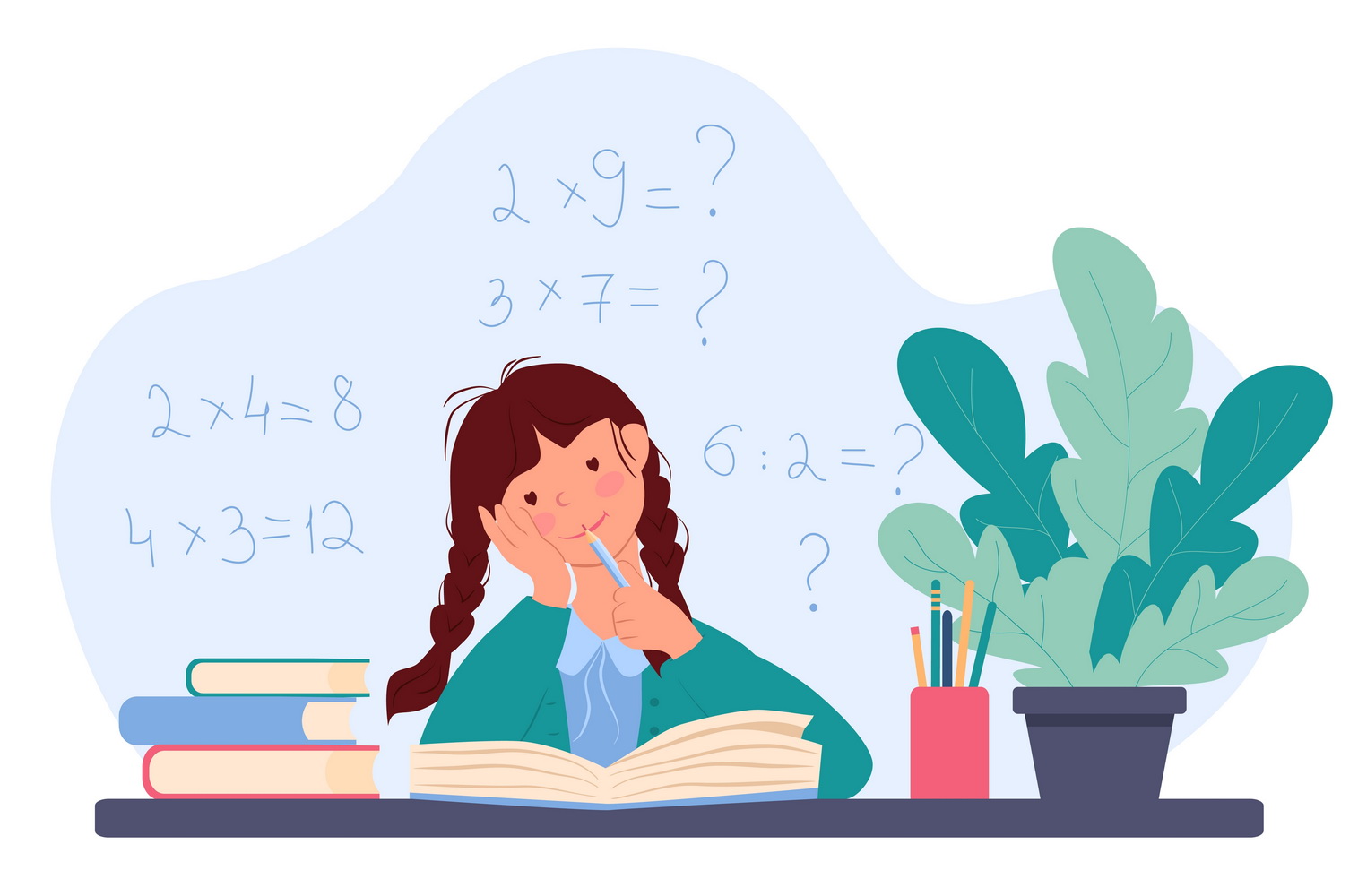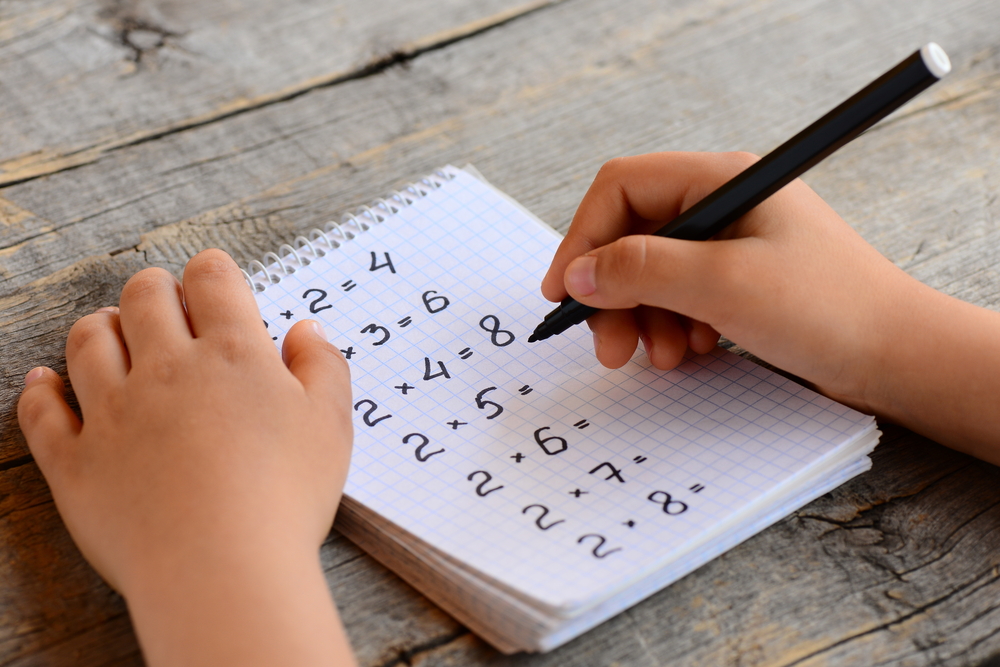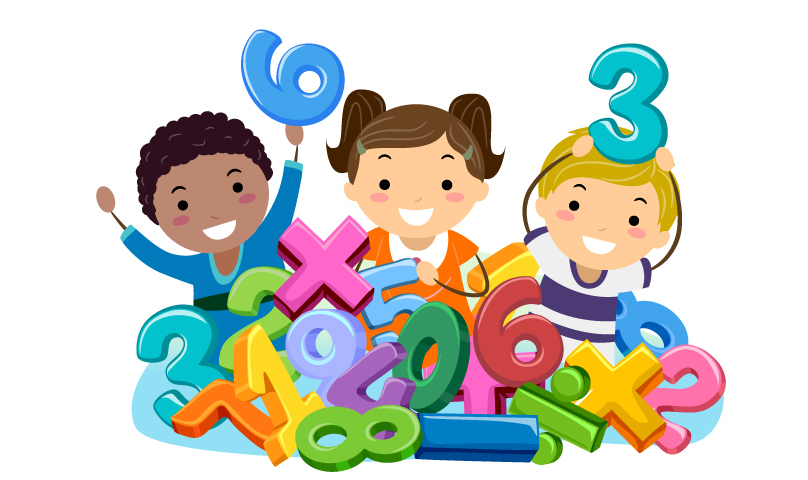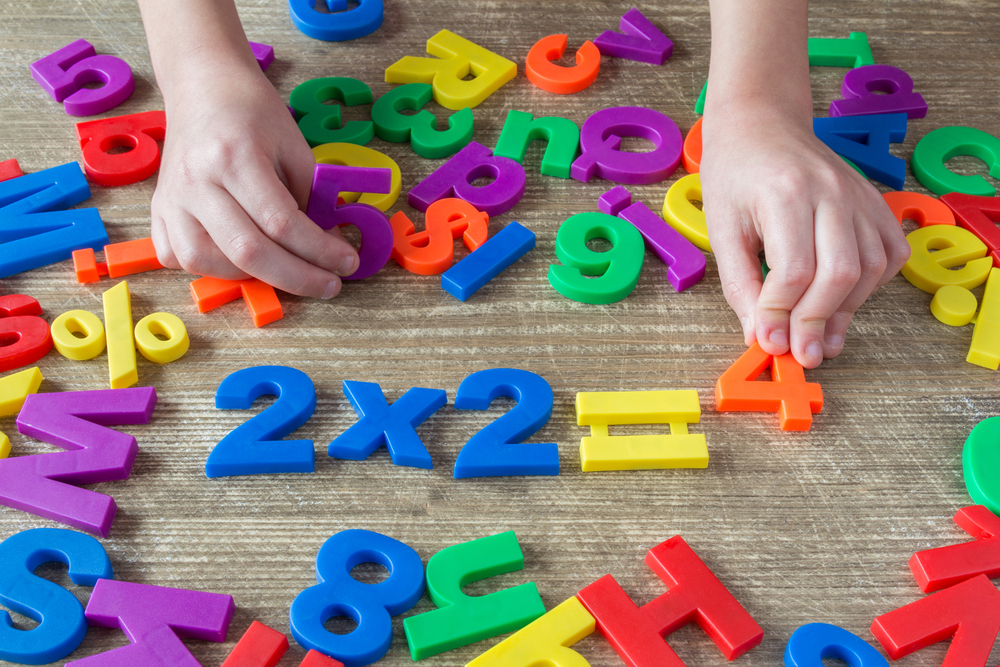Arrays Worksheets for Ages 3-8
21 filtered results
-
From - To
Help your child develop a strong foundation in math with our engaging Arrays Worksheets for ages 3-8. Perfect for young learners, these worksheets introduce the concept of arrays using fun, simple activities that make learning enjoyable. Children will learn to recognize, create, and manipulate arrays through illustration-based problems and interactive exercises. Our expertly crafted worksheets align with educational standards, fostering critical thinking and problem-solving skills. Use these resources to prepare your little one for more advanced math topics, ensuring they gain confidence and proficiency in early math concepts. Start their mathematical journey with our user-friendly arrays printable worksheets!
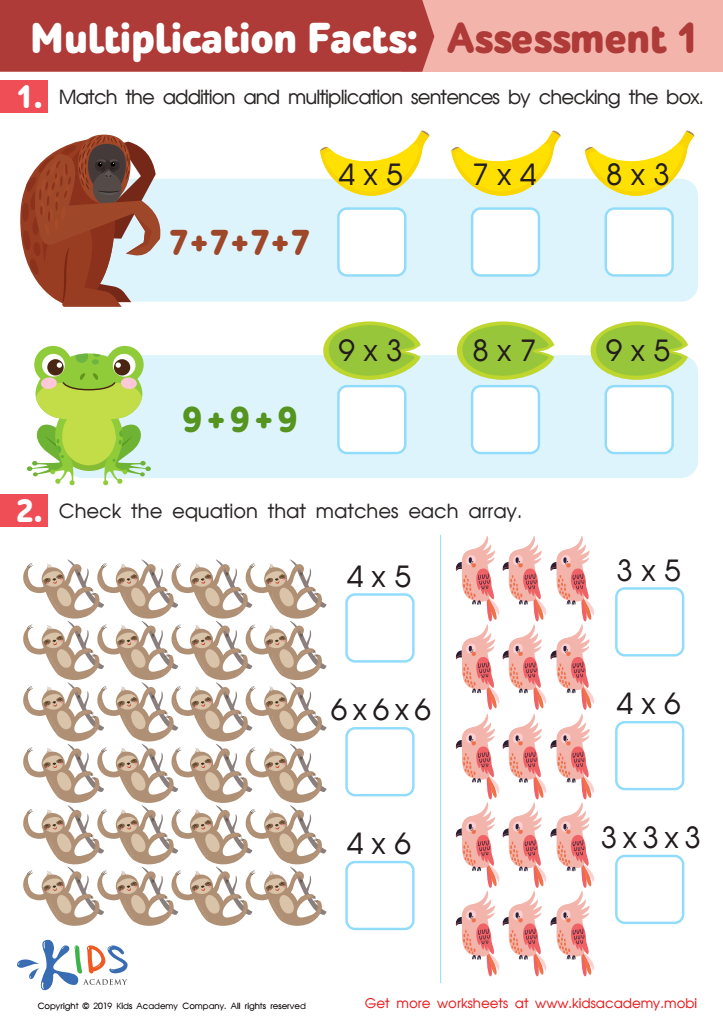

Multiplication Facts: Assessment 1 Worksheet
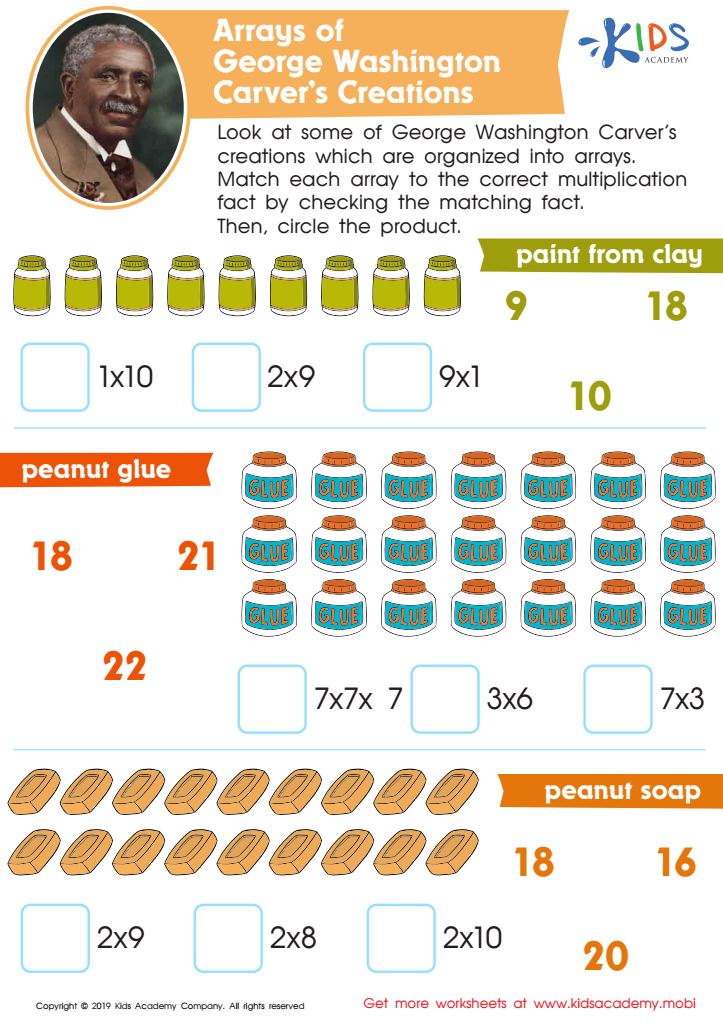

Arrays of George Washington Carver’s Creations Worksheet


Fruity Array Quest Worksheet
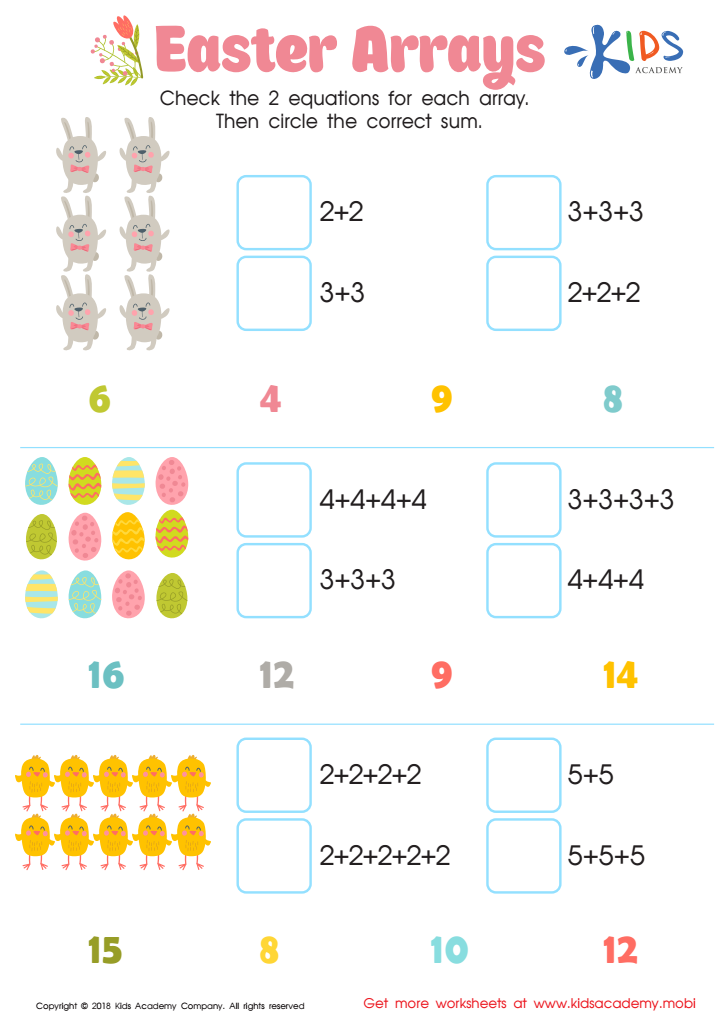

Easter Arrays Worksheet
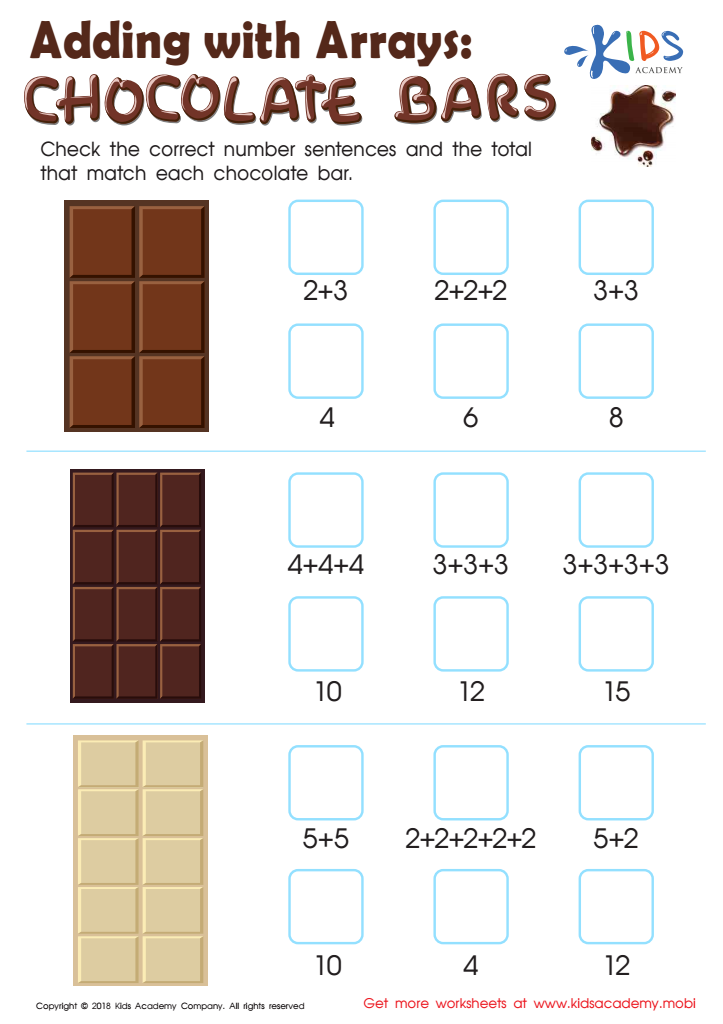

Adding with Arrays: Chocolate Bars Worksheet
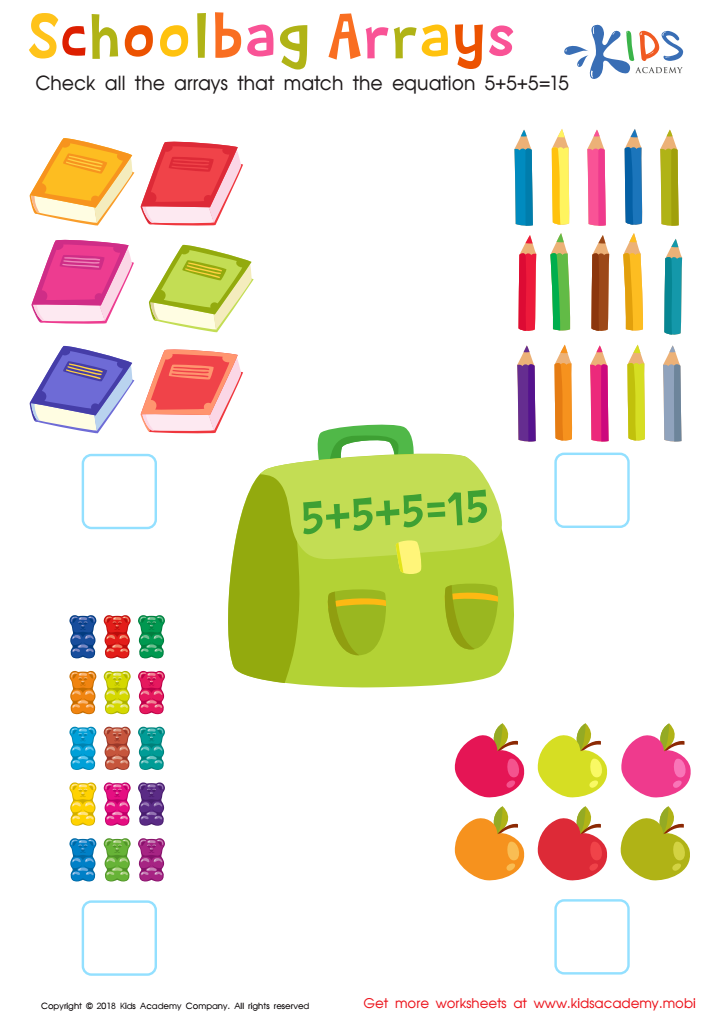

Schoolbag Arrays Worksheet


Colorful Arrays Bingo Worksheet


Party Arrays Worksheet


Arrays and Equations Worksheet
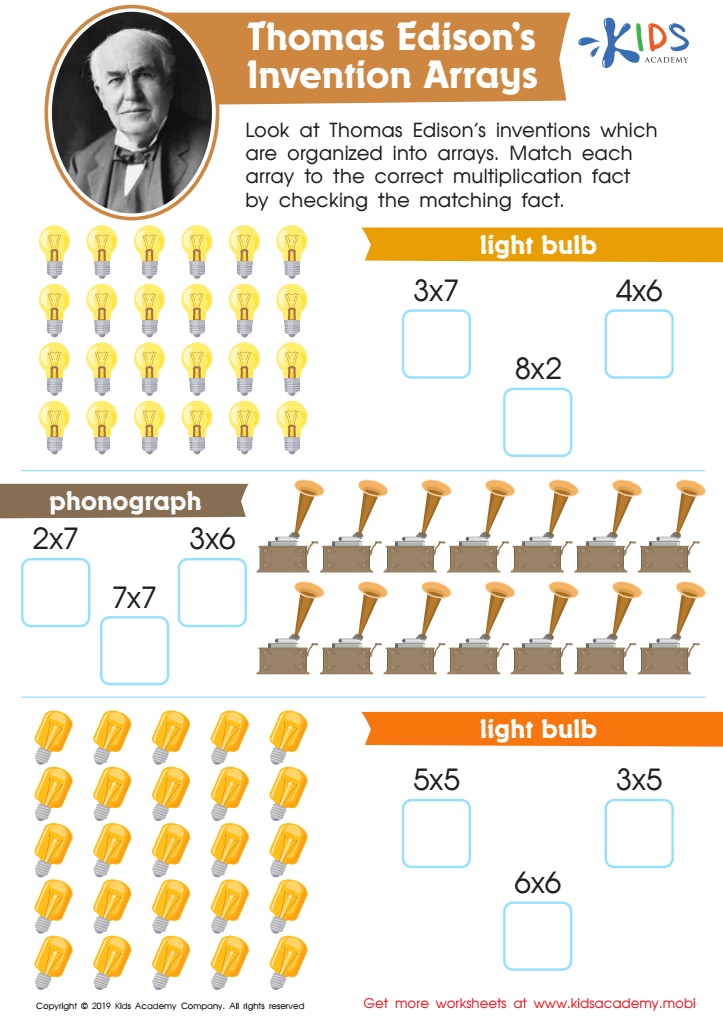

Thomas Edison’s Invention Arrays Worksheet
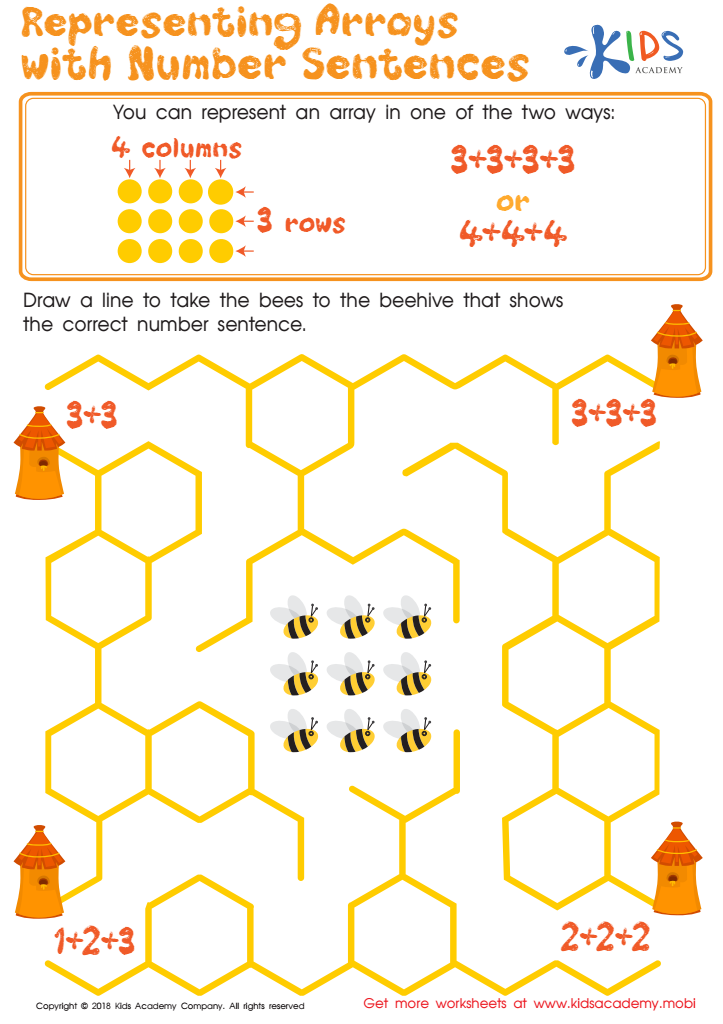

Representing Arrays with Number Sentences Worksheet
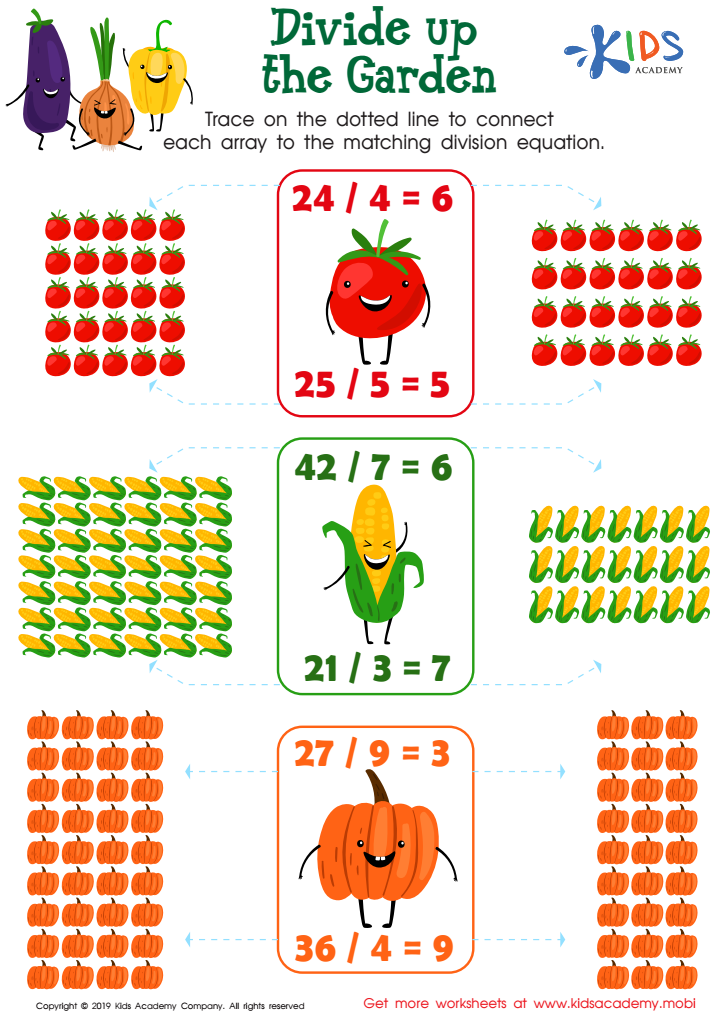

Divide up the Garden Worksheet
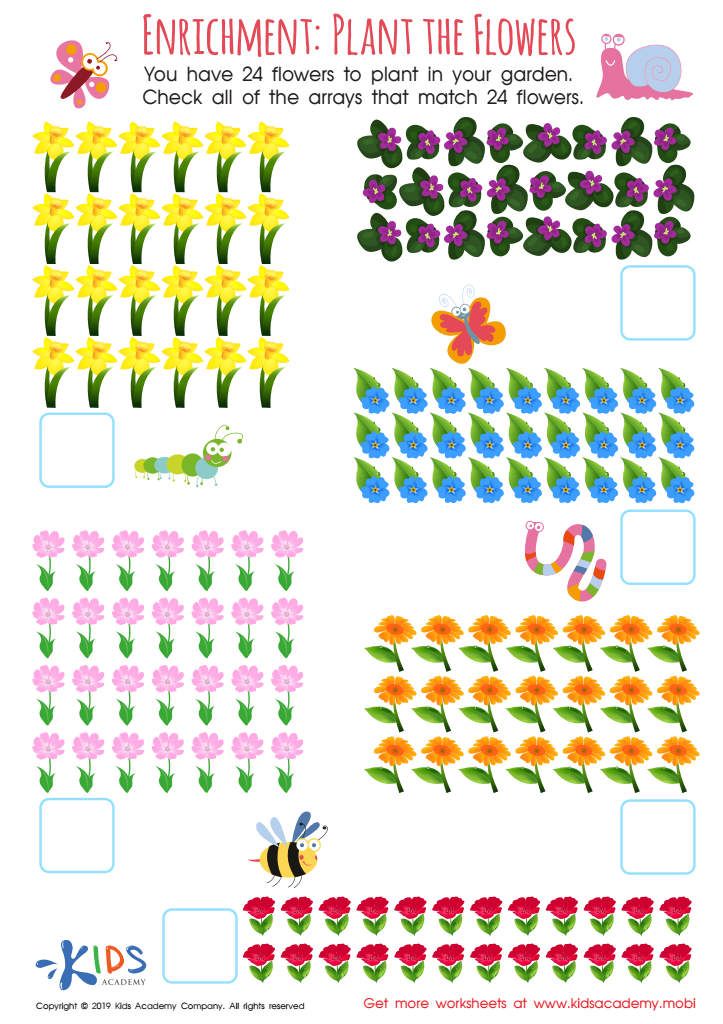

Enrichment: Plant the Flowers Worksheet
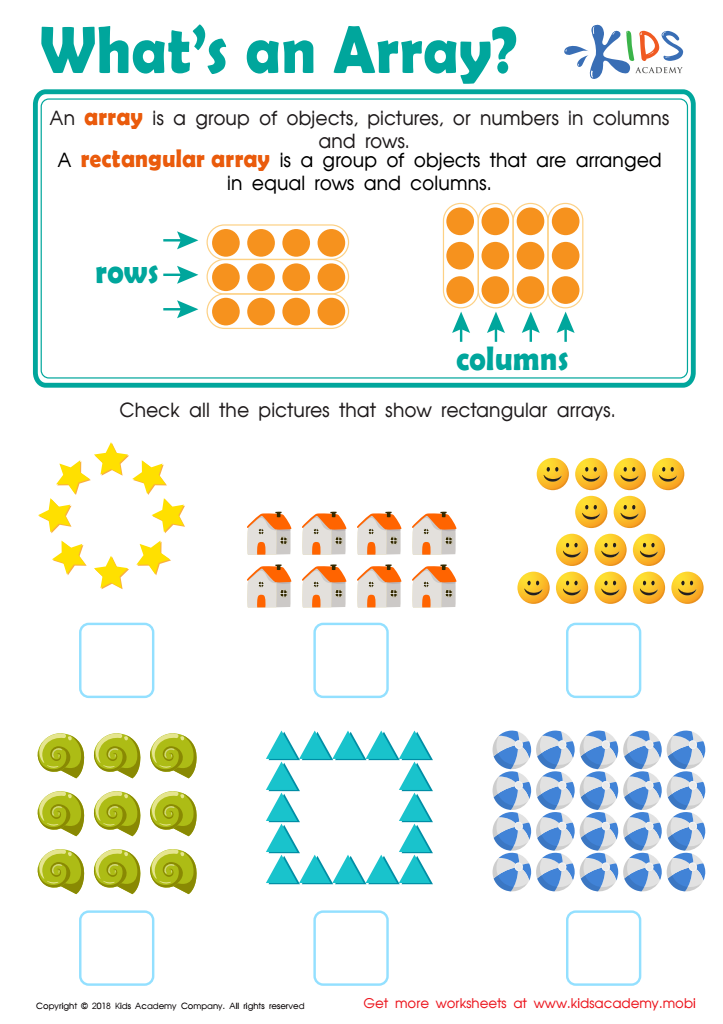

What's an Array? Worksheet
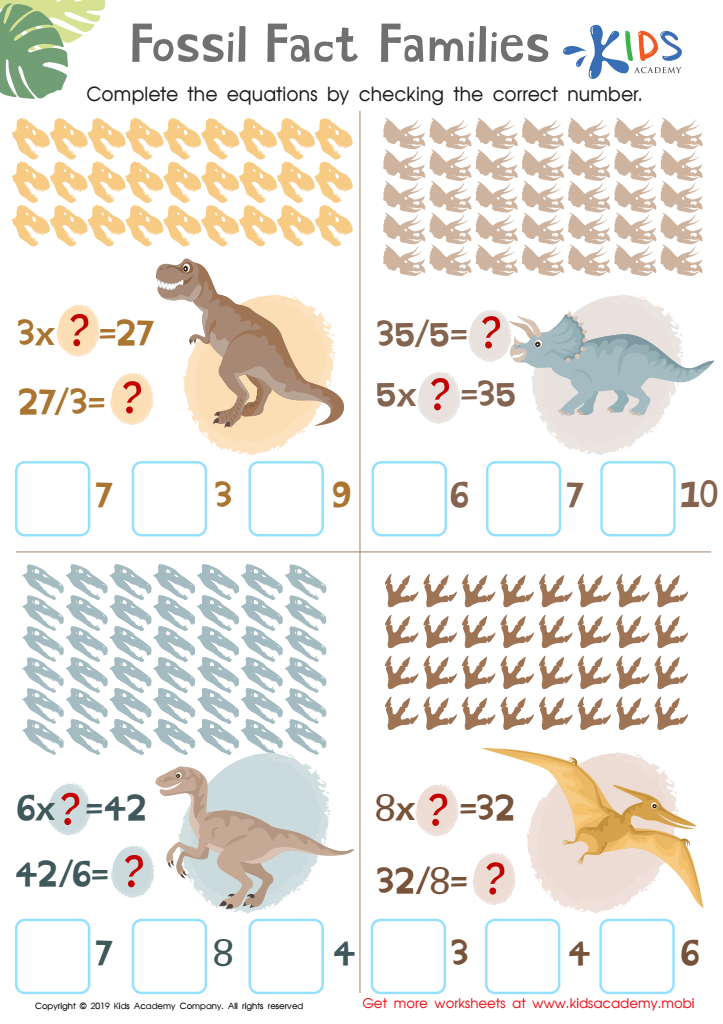

Fossil Fact Families Worksheet
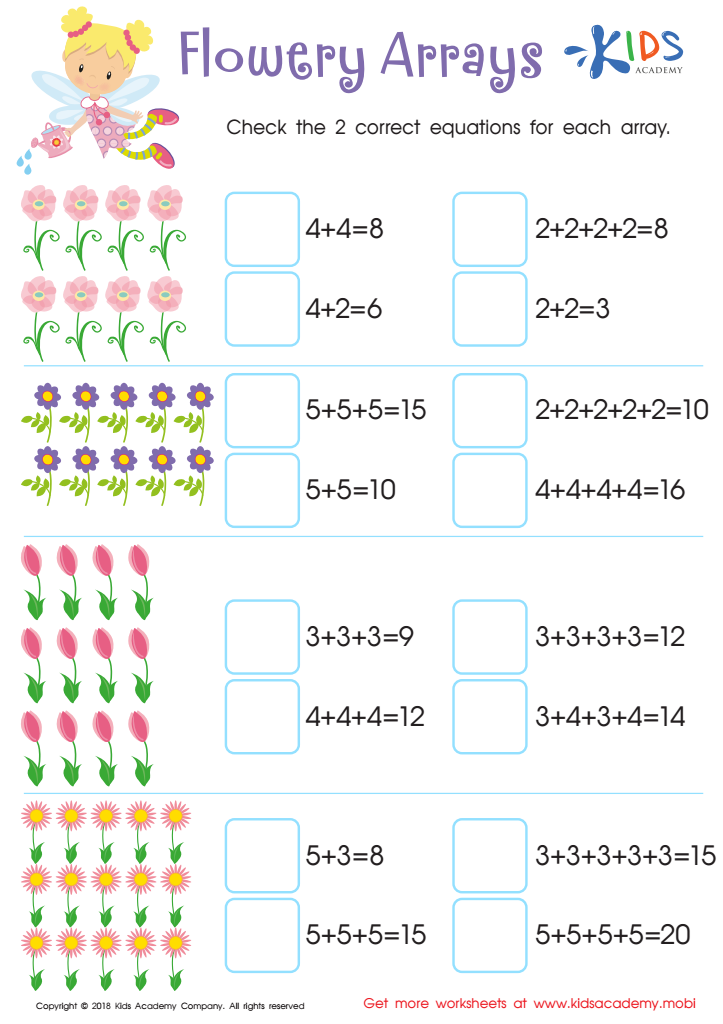

Flowery Arrays Worksheet
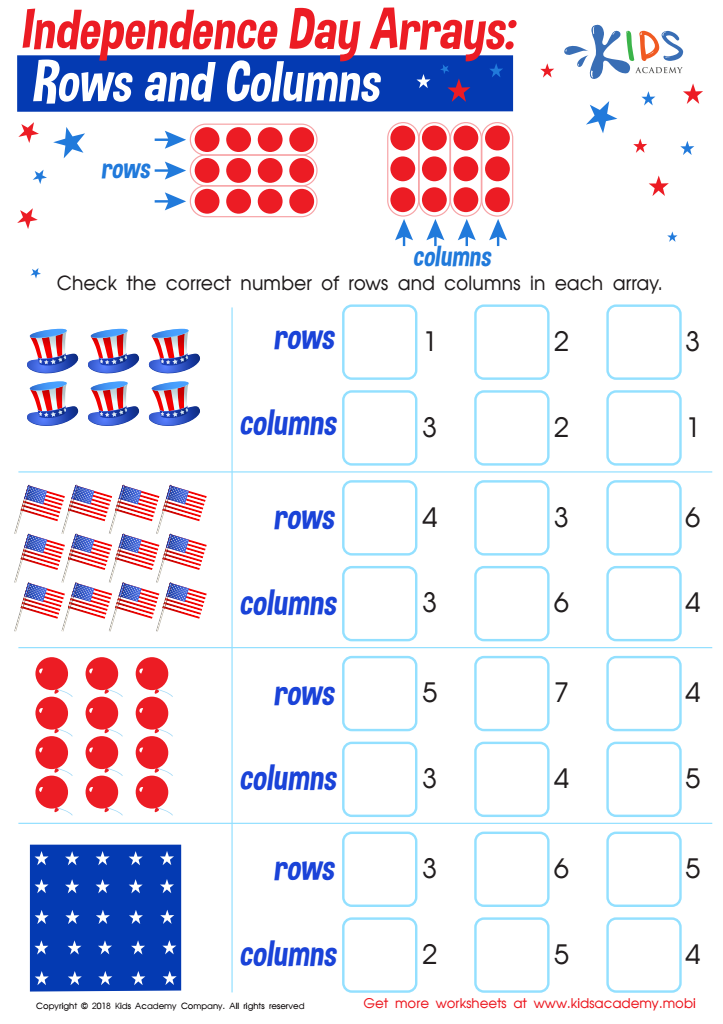

Independence Day Arrays: Rows and Columns Worksheet
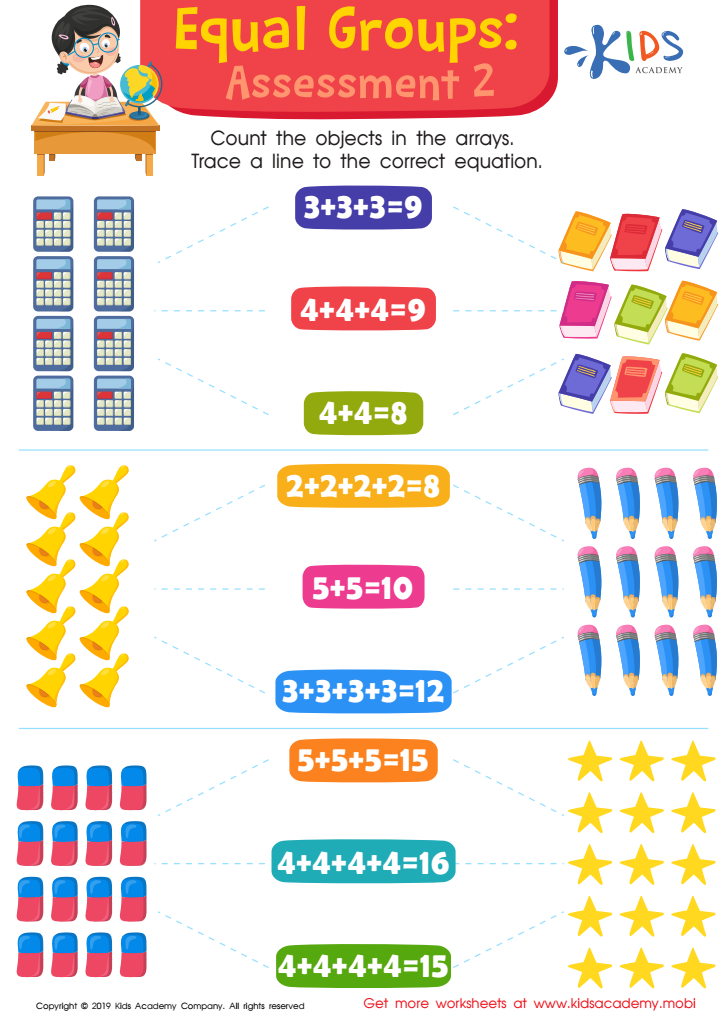

Equal Groups: Assessment 2 Worksheet


At the Market Worksheet
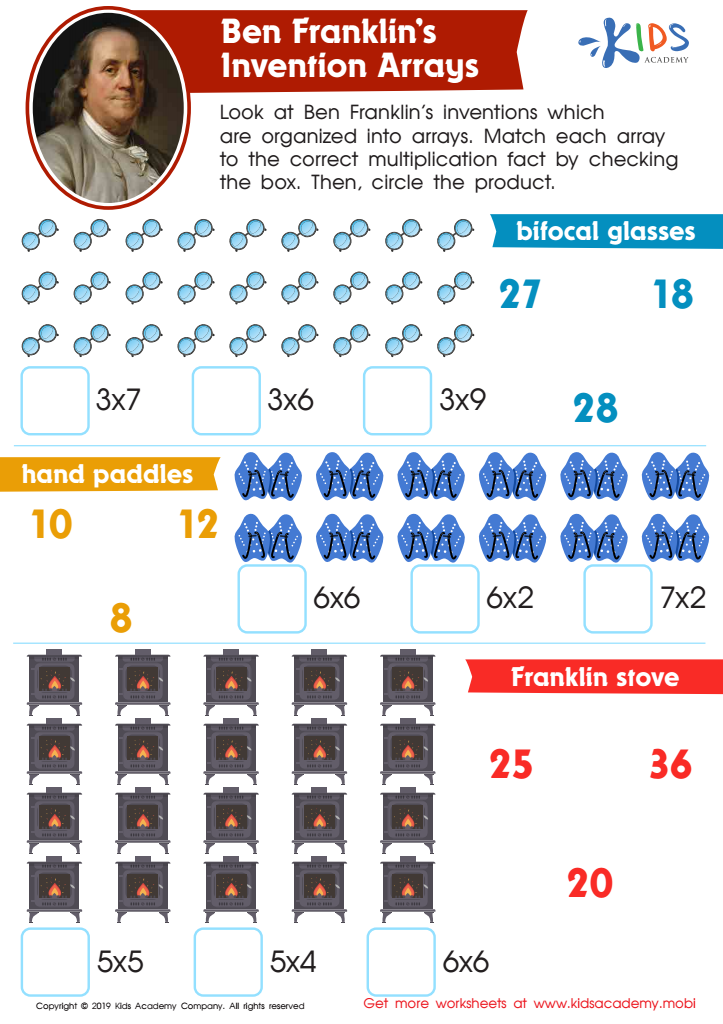

Ben Franklin’s Invention Arrays Worksheet
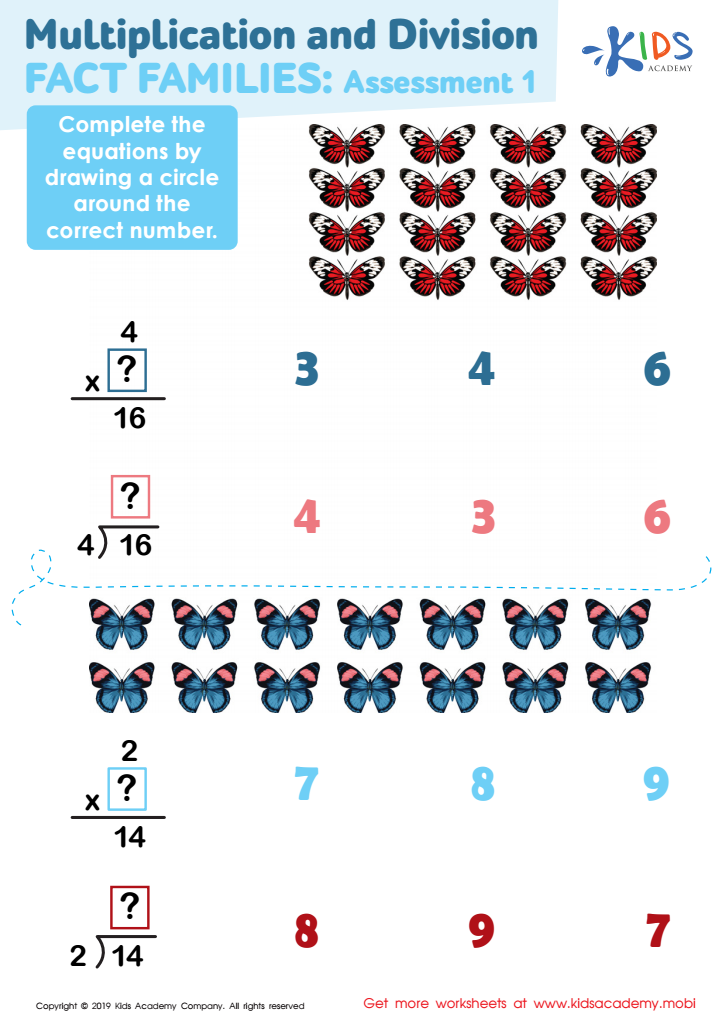

Multiplication and Division Fact Families Assessment 1 Worksheet
While the term "array" might sound advanced, introducing the concept of arrays to children aged 3-8 lays a crucial foundation for their mathematical and problem-solving skills. Arrays, essentially, are organized arrangements of objects, pictures, or numbers in columns and rows, which can simplify complex ideas and promote visual learning.
For young children, understanding arrays helps in recognizing patterns—a critical aspect of early cognitive development. Patterns are everywhere, from simple arrangements of toys to more structured layouts of seating or objects. By identifying and creating arrays, kids develop their spatial awareness and organizational skills.
Moreover, arrays are directly linked to fundamental mathematical operations such as addition and multiplication. For example, by arranging items in rows and counting them, children learn the basics of multiplication through repeated addition, e.g., four rows of three toys illustrate 4 x 3 = 12. This visual method transforms abstract concepts into tangible actions, making them easier for young minds to grasp.
Finally, engaging with arrays fosters critical thinking and problem-solving skills. Children learn to arrange, interpret, and manipulate groups of objects, thereby enhancing their logical reasoning abilities. For these reasons, parents and teachers should actively incorporate arrays into early learning to build a strong numerical and cognitive foundation.
 Assign to My Students
Assign to My Students





